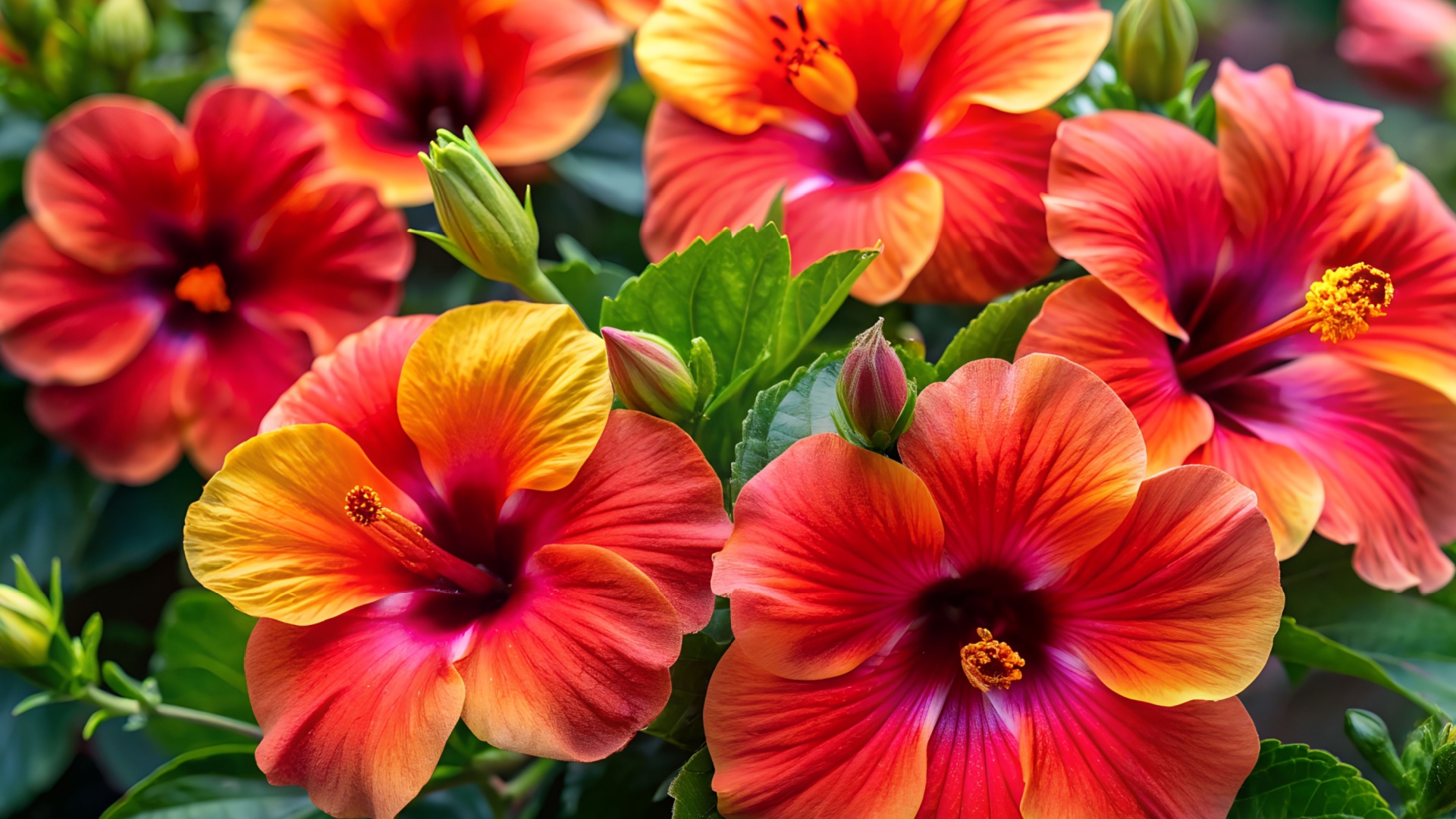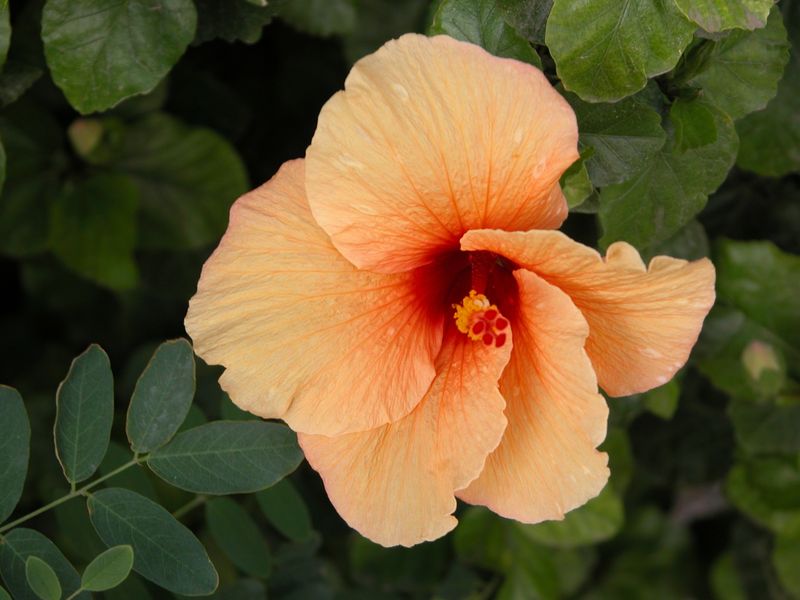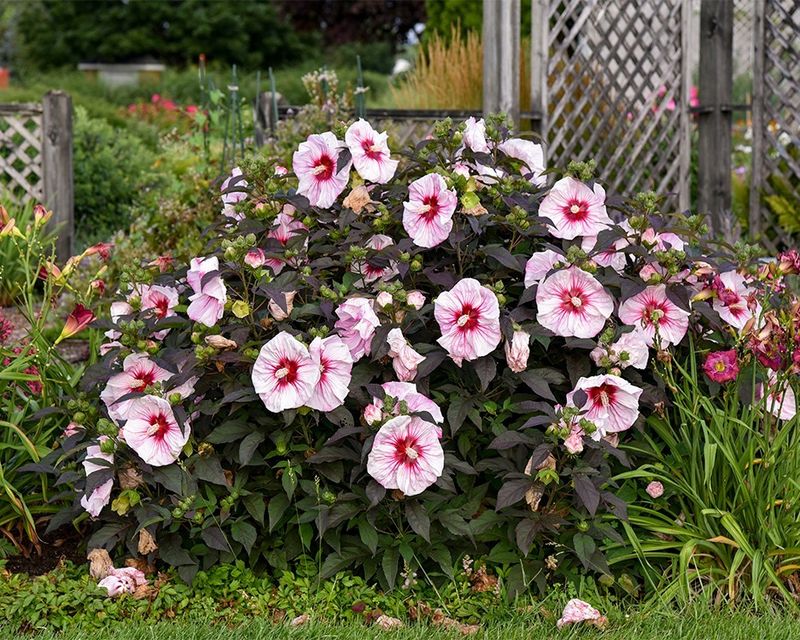When the summer sun blazes, most flowers fade—but not hibiscus, if you know how to treat it right. These 15 tried-and-true tips will help you grow bold, brilliant hibiscus that doesn’t just survive the heat—it owns it.
From watering tricks to sunlight secrets, here’s how to keep those tropical blooms thriving and turning heads all season long.
1. Choose Heat-Loving Varieties
Not all hibiscus are created equal when it comes to heat tolerance. Tropical varieties like Hibiscus rosa-sinensis naturally withstand scorching temperatures better than hardy hibiscus. Look for cultivars specifically bred for heat resistance, such as ‘Brilliant,’ ‘Painted Lady,’ or ‘President.’
Local nurseries often carry varieties that perform well in your specific climate. Ask about their heat tolerance before purchasing. The right variety will reward you with continuous blooming even when temperatures soar into the 90s.
2. Perfect Your Planting Location
Hibiscus plants crave sunshine but appreciate afternoon shade in extremely hot climates. Morning sun provides energy for blooming while protection from intense afternoon rays prevents stress. The sweet spot is 6-8 hours of direct sunlight daily.
Plant near a wall that receives morning sun and afternoon shade for ideal conditions. Avoid planting too close to other shrubs that might compete for water and nutrients. Good air circulation also helps prevent fungal issues that can develop in hot, humid conditions.
3. Create Rich, Well-Draining Soil
Hibiscus thrives in soil that holds moisture without becoming waterlogged. Mix garden soil with equal parts compost and perlite to create the perfect growing medium. This combination retains enough moisture while allowing excess water to drain away from sensitive roots.
For potted hibiscus, commercial cactus mix amended with compost works wonderfully. The slightly acidic soil pH between 6.0-6.5 helps hibiscus access nutrients efficiently. Avoid heavy clay soils that become brick-hard in summer heat, as they restrict root growth and water penetration.
4. Master Summer Watering Techniques
Consistent moisture keeps hibiscus blooming through heat waves. During peak summer, water deeply every 1-2 days for in-ground plants and daily for containers. Always check soil moisture first – stick your finger an inch deep, and if it feels dry, it’s watering time.
Early morning watering allows plants to absorb moisture before the day heats up. Avoid evening watering which can promote fungal problems. A 2-3 inch layer of mulch around plants (keeping it away from stems) dramatically reduces water evaporation and keeps roots cooler.
5. Feed Regularly With The Right Fertilizer
Hibiscus are heavy feeders that need regular nutrition to produce spectacular blooms in summer heat. Choose a fertilizer higher in phosphorus (the middle number) to encourage flowering – look for ratios like 10-20-10. Avoid high-nitrogen formulas that promote leafy growth at the expense of flowers.
During active growing season, fertilize every two weeks with half-strength solution. Organic options like fish emulsion work beautifully but may need more frequent application. Always water plants thoroughly before fertilizing to prevent root burn, especially during hot weather.
6. Prune For Maximum Flowering
Strategic pruning encourages hibiscus to produce more branches and consequently more flowers. In early spring, trim back about one-third of the previous year’s growth using clean, sharp pruners. Make cuts just above outward-facing leaf nodes to direct new growth away from the center.
Throughout summer, pinch off spent blooms promptly to redirect energy into new flower production rather than seed formation. Remove any dead or yellowing leaves immediately. Light pruning of leggy stems during the growing season keeps plants compact and energy focused on creating those spectacular blooms.
7. Control Pests Without Harming Blooms
Summer heat brings unwanted visitors like aphids, whiteflies, and spider mites that can devastate hibiscus. Inspect the undersides of leaves weekly where pests often hide. A strong spray of water from the hose dislodges many pests before they establish colonies.
For persistent problems, mix 1 tablespoon mild dish soap with 1 quart water and spray in the early morning or evening. Neem oil provides excellent organic control but apply only in the evening to prevent leaf burn. Avoid chemical pesticides during flowering as they may harm beneficial pollinators that visit your gorgeous blooms.
8. Provide Humidity In Dry Heat
Hibiscus evolved in tropical environments and appreciate humidity, especially during dry heat waves. Misting the foliage (not the flowers) in the morning helps recreate their preferred environment. For potted plants, place on a tray filled with pebbles and water, ensuring the pot sits on the pebbles above the waterline.
Grouping plants together naturally increases humidity through transpiration. During extremely dry periods, a portable humidifier near indoor hibiscus works wonders. Avoid misting during the hottest part of the day as water droplets can act like magnifying glasses and burn leaves.
9. Protect From Extreme Temperature Swings
While hibiscus loves heat, sudden temperature fluctuations stress plants and reduce flowering. In regions with cool nights, place potted hibiscus against a south-facing wall that radiates stored heat after sunset. Move container plants to sheltered locations when temperatures drop below 50°F.
Temporary row covers provide overnight protection for in-ground plants during unexpected cool snaps. For extreme heat waves exceeding 95°F, temporary shade cloth (30% shade) during peak afternoon hours prevents flower drop. Consistent temperatures produce the most reliable blooming schedule through summer.
10. Perfect Container Growing Techniques
Container-grown hibiscus offers flexibility during heat waves. Choose pots at least 12-14 inches in diameter with multiple drainage holes. Glazed ceramic or plastic containers retain moisture better than terracotta in extreme heat.
Use premium potting mix specifically formulated for flowering plants. Position containers where they can be easily moved to protect from afternoon sun during heat waves. Water until liquid flows from drainage holes, sometimes twice daily during extreme heat. Monthly root pruning during the growing season keeps container plants vigorous and prevents them from becoming root-bound.
11. Apply Mulch Strategically
Mulching is perhaps the single most effective strategy for helping hibiscus thrive in summer heat. Apply a 2-3 inch layer of organic mulch like shredded bark, cocoa hulls, or pine straw around plants, keeping it 2 inches away from stems to prevent rot.
Mulch insulates soil from temperature extremes, keeping roots significantly cooler. It also dramatically reduces water evaporation, meaning less frequent watering. As organic mulches break down, they add valuable nutrients to the soil. Refresh mulch monthly during peak summer as it decomposes more quickly in heat.
12. Manage Transplant Timing Carefully
Never transplant hibiscus during summer heat waves – the stress dramatically reduces flowering. Early spring or fall provides ideal transplanting conditions when temperatures are moderate. If summer transplanting becomes absolutely necessary, choose an overcast day and transplant in the evening.
Prepare the new location before disturbing the plant. Water thoroughly the day before to ensure the root ball stays intact during the move. After transplanting, provide afternoon shade for at least two weeks and keep soil consistently moist. Avoid fertilizing for three weeks after transplanting to prevent root burn.
13. Prevent Common Summer Diseases
Hot, humid conditions create perfect environments for fungal diseases like powdery mildew and leaf spot. Maintain good air circulation by spacing plants properly and pruning crowded growth. Water at the base rather than overhead to keep foliage dry.
Apply organic fungicides preventatively during periods of high humidity. Sprinkle ground cinnamon around plant bases as a natural fungicide. Remove any infected leaves immediately and dispose of them in the trash, not compost. Disinfect pruning tools between cuts with alcohol wipes to prevent spreading disease.
14. Encourage Beneficial Insects
Beneficial insects provide natural pest control for hibiscus during summer heat. Plant companions like sweet alyssum, cosmos, and marigolds nearby to attract ladybugs, lacewings, and predatory wasps that feed on common hibiscus pests.
Avoid broad-spectrum insecticides that kill beneficial insects along with pests. Create small water sources like shallow dishes with pebbles for beneficial insects to drink during hot weather. A diverse garden ecosystem naturally limits pest populations. Some gardeners even purchase beneficial insects like ladybugs to release during summer pest outbreaks.
15. Extend Blooming Season With Proper Care
Extend hibiscus flowering well into fall by adjusting late summer care. Switch to a higher-potassium fertilizer (the last number in the N-P-K ratio) in late summer to strengthen plants against cooling temperatures. Continue deadheading religiously to prevent the plant from sensing the season’s end.
Gradually reduce watering frequency but maintain the same depth as temperatures cool. Protect from early fall cold snaps with temporary covers. For tropical varieties in colder regions, prepare to bring potted plants indoors before temperatures drop below 50°F. With proper transition care, many hibiscus varieties will continue flowering weeks longer than neglected plants.
















